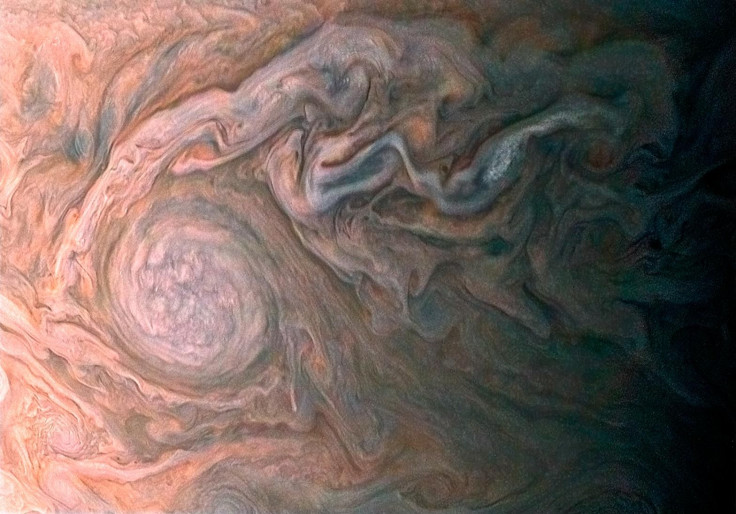NASA Finds Jupiter’s Equatorial Jet Streams Reversed By Gravity Waves

At least three planets in the solar system — Earth, Jupiter and Saturn — have an equatorial jet stream, a high-speed air current that reverses its direction of flow at regular, fixed intervals. And using observation data collected over five years, a team of scientists led by NASA researchers has understood what causes this atmospheric phenomenon on Jupiter.
Jupiter has a very large and dynamic atmosphere, and understanding it could also help astronomers better model the atmospheres of other planets, even those beyond our solar system. For the new study, the researchers combined models of the gas giant’s atmosphere with data from NASA’s Infrared Telescope Facility (IRTF) in Hawaii.
On Earth, the alternating pattern of the jet stream is called quasi-biennial oscillation (QBO) and each cycle (from the west-to-east flow to east-to-west and back) lasts about 28 months, or a little over two years. The cycle on Jupiter has a duration of about four years, and is called quasi-quadrennial oscillation (QQO).
“Jupiter is much bigger than Earth, much farther from the Sun, rotates much faster, and has a very different composition, but it turns out to be an excellent laboratory for understanding this equatorial phenomenon,” Rick Cosentino, a postdoctoral fellow at NASA’s Goddard Space Flight Center in Greenbelt, Maryland, and lead author of a paper published in the Journal of Geophysical Research-Planets, said in a statement Monday.
The five-year data collection, made possible with an instrument called Texas Echelon Cross Echelle Spectrograph installed on the IRTF, allowed researchers to study a full cycle of QQO, the first study to have done so. It also covered a large area over Jupiter, spanning between 40 degrees north and 40 degrees south of the equator, as well as a sizeable vertical range in the layers of the Jovian atmosphere.
“These measurements were able to probe thin vertical slices of Jupiter’s atmosphere. Previous data sets had lower resolution, so the signals were essentially smeared out over a large section of the atmosphere,” Amy Simon, a Goddard scientist who specializes in planetary atmospheres, and a coauthor on the paper, said in the statement.
Based on the method of elimination, the researchers crossed out several atmospheric waves as being significant contributors to QQO, and finally settled on gravity waves as the primary driver behind the phenomenon on Jupiter.
Gravity waves are thought to be produced in the lower atmosphere of Jupiter, due to convection in the region. Those waves then make their way higher, to the upper atmosphere, specifically into the stratosphere where they subject the jet stream to reverse its direction of flow. The researchers checked their theory with simulations, whose results matched obervations.
“Through this study we gained a better understanding of the physical mechanisms coupling the lower and upper atmosphere in Jupiter, and thus a better understanding of the atmosphere as a whole. Despite the many differences between Earth and Jupiter, the coupling mechanisms between the lower and upper atmospheres in both planets are similar and have similar effects,” Raúl Morales-Juberías, the second author on the paper and an associate professor at the New Mexico Institute of Mining and Technology in Socorro, said in the statement.
Gravity waves are also thought to be the primary factor for the QBO to change its direction, but the waves don’t seem powerful enough on Earth to affect the change by themselves.
The open-access paper, titled “New Observations and Modeling of Jupiter's Quasi-Quadrennial Oscillation,” appeared online Monday.
© Copyright IBTimes 2025. All rights reserved.




















